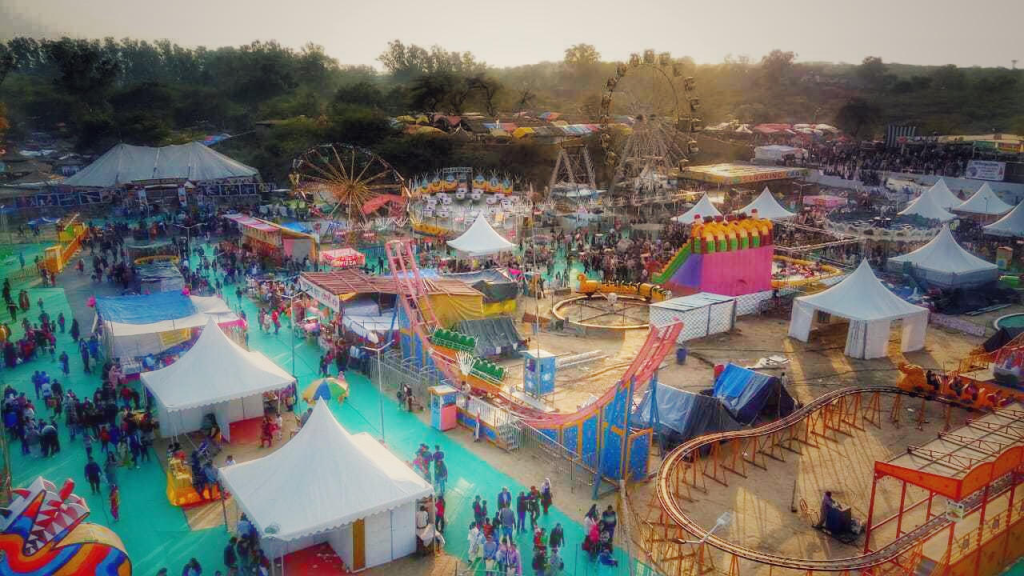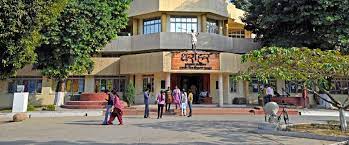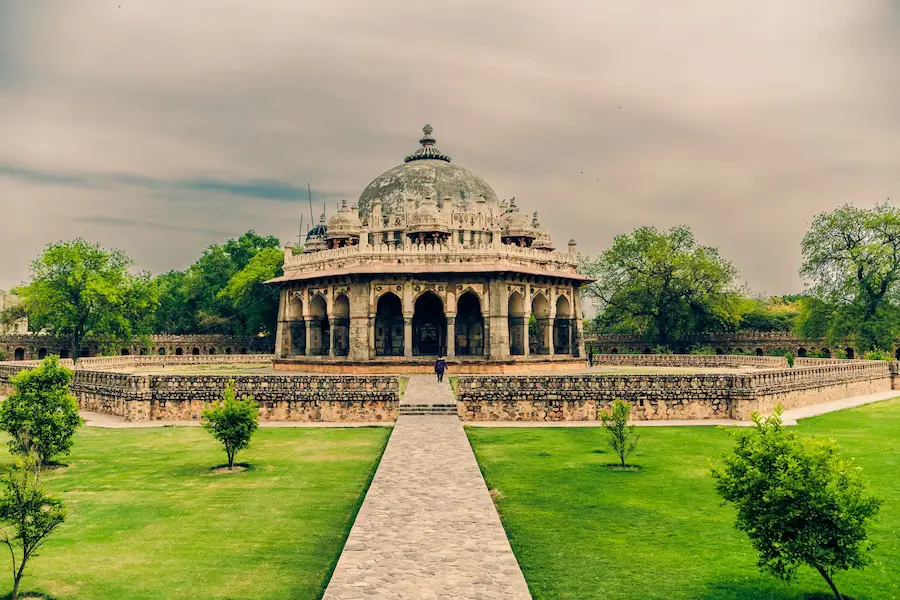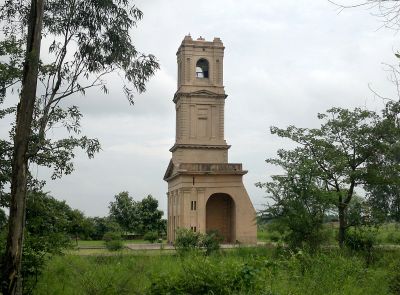Browse Items (64 total)
Sort by:
-
Vishvamitra Ka Tila
Two inscriptions of Gurjar-Pratihara period have been found at Pehowa. One inscription from this place records the creation of three Vishnu temples in this town. Another inscription, still in the Garibnath Mutth at Pehowa, of Raja Bhojdeva of 882 AD, records collection of voluntary tax from each trader for the purpose of maintenance of these Vishnu temples existing there and elsewhere. This site of Vishvamitra ka Tila too contained the remains of one of the Vishnu temples at this place.
This temple site was scientifically cleared under the direction of Shri D.S.Malik of the Department of Archaeology & Museum, Government of Haryana. Scientific clearance of this site yielded beautiful stone sculptures depicting Ramayana and Mahabharata scenes. The remains of an ancient temple plinth made of baked bricks were also found during clearance operation. These are the only known brick temple remains of this kind in this region. -
Tripolia Gateway
Shah Quil Khan was valiant noble of Akbar’s court. He was made Governor of Punjab in 1575 AD. He died at Agra in 1601 AD. At Narnaul, where he spent maximum time of his life, he erected splendid buildings and a beautiful garden and named it as Aram-i-Kausar. The Tripolia Gateway is the main entrance to this garden. This fine gateway was constructed within the compound of the garden. The interior walls and ceilings of the façade are adorned with pleasing ornamental carvings. The inscription existing over the pointed arch of the entrance gate records the name of the garden, its builder and the date of its construction. -
Tomb of Sheikh Tayyab
The words ‘Sheikh’ and Tayyab’ stand for terms ‘Fakir’ (saint) and ‘pure’ sufi saint Hazrat Shah Kamal came to India from Bagdad and after his death, Sheikh Tayyab enthroned the spiritual seat of his teacher. Sheikh Tayyab died sometime in the late 16th century AD. It is said that this tomb was constructed by Hazrat Shah Sikandar, the son of Hazrat Shah Kamal. The tomb is bult on a square plan, a popular style of Pathan architecture.
-
Tomb of Shah Quli Khan
Shah Quil Khan was the Governor of Narnaul during the reign of Mughal emperor Akbar (1556-1605 AD). He built this tomb in memory of his father but after his death, his mortal remains were also buried here. Situated on a high octagonal platform approachable from south, the tomb is built in grey stone mixed with red sandstone presenting a remarkable appearance. Both the interior and exterior of the tomb are octagonal in shape having a narrow passage supported on projecting running all along the base of the arched openings and recesses. The interior of the tomb is sub-divided into two storeys. -
Tomb of Razia Sultan
She was first woman to sit on the throne of Delhi. But the nobles revolted against her and made her brother Mohin-ud-Din Bahram Shah sit on the throne. Meanwhile, Razia got married to Negro Altunia, the Governor of Bhatinda. For capturing the throne, they both marched towards Delhi, Bahram send his army to capture them. The armies of both the parties fought near Kaithal and Razia was killed on 14th October, 1240 AD and was buried at the site of her death.
The original grave of Razia once existed at this place. This mausoleum was protected by a boundary wall and the western wall had a closed arch. A small gate was left on the eastern side for entering the monument. As it is evident from its style of architecture, this present structure of the tomb was erected sometime during late 16th century AD. It was made of baked bricks and lime mortar. A mosque and a well near the tomb were also built while constructing this mausoleum.
-
Tomb of Khawaja Pir
He was one of those who accompanied Muhammad Ghori to India and resided here. A mosque was built adjoining the tomb later during the 16th century. However, no remains of tomb or mosque are there. Guru Nanak Dev is said to have stayed here for 40 days at the tomb alongwith his disciples Bala and Mardana.
-
Tomb of Ibrahim Khan Suri
The inscription over the entrance of the tomb suggests that it was constructed on the instructions of Sher Shah Suri (1540-45 AD) over the grave of his grandfather, Ibrahim Khan Sur, who died at Narnaul in 1518 AD. Its entrance is on the eastern side, and appears to have been built of Hindu temples and has beautiful carvings. The façade, divided in two storeys by a bandof moulding, is decorated with small panels showing low relief carving in red sandstone bordered with grey limestone. Four octagonal cupolas, placed at the four corners of the terrace, balance the dome.
-
SHOBHA SAROWAR
Therefore, this huge pond (sarovar) was built by a local chief during late Mughal period for the use of general public. The ‘sarovar’ was constructed in rubble masonry with thick layer of lime plaster in the style of then prevailing Hindu architecture. Four staircases in each arm of the pond lead to the water storage tank. There were twelve kiosks (chhatri) on its boundary wall, one each at the corners and two each on the either sides of the staircases. At present only two out of twelve are surviving. An inscription affixed on the eastern wall records that an enclosed chamber for ladies-bath was added to this pond in 1929 AD. This ‘sarovar’ is still in public use. -
Sheikh Chaheli’s Tomb
The tomb, overlooking the madarasa and standing on an artificial terrace, is octagonal in shape with the entrance in the south. It is built of buff sandstone and is crowned with a pear-shaped dome of white marble standing on a high circular drum. The cenotaph of saint occupies the centre of the chamber, while his grave is located in the lower chamber, which conjoins the madarasa through a narrow gallery. The madrassa has nine-arched openings on each side of a central courtyard that has in the centre a stone masonty tank. John Dawkins, the then collector of Thaneshar, was instrumental in getting the tomb repaired in 1854 AD. The antiquities recovered from the excavations at Harsh ka Tilla and Bhagwanpura (both failing in the district of Kurukshetra) are displayed in two small museums of the madarasa building -
Shahjahan ki Baoli
This baoli is possibly the finest and the best such monument preserved in Haryana. According to an inscription on the well, it was built by Saidu Kala, a chobdar in the service of Emperor Shah Jahan, in 1658-59 AD. It is an elaborate structure of bricks and kankar blocks, has 101 steps extending in three stages, separated by landings and leading to the water reservoir. The circular well is located at the end of the stairs.

















